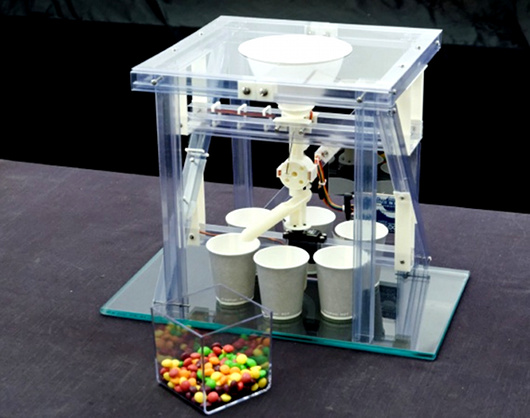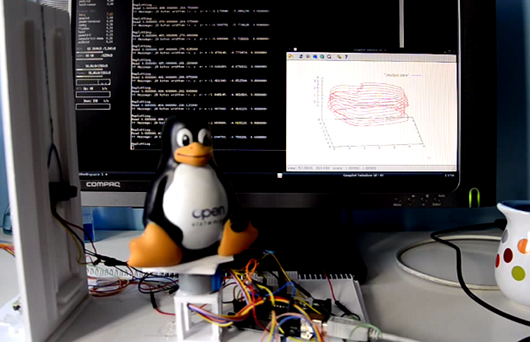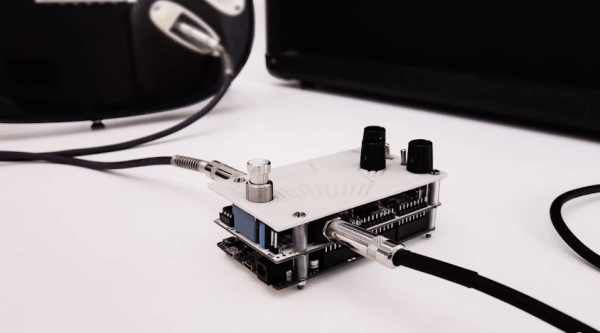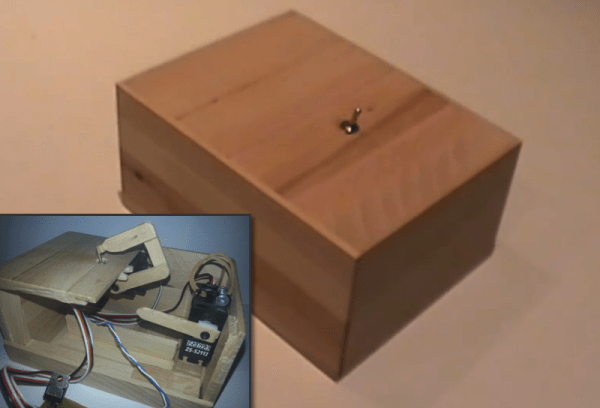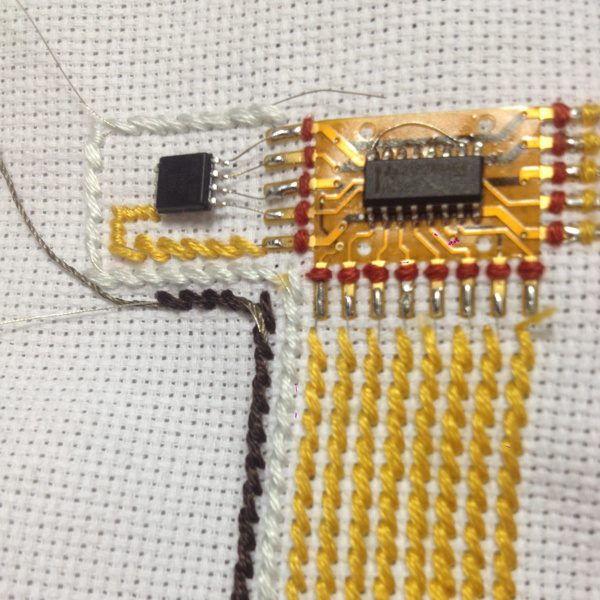OCD. Sometimes things just get to you, like those pesky bags of randomly assorted candies. [Torsten] decided to build a sorting machine capable of sorting Skittles or M&Ms into separate cups by color at around 80 pieces per minute. It’s a great implementation, using an Arduino Duo. He based the code on the principles of a finite-state machine, in order to make it as quick as possible.
It works as you would expect: When a candy piece is loaded, the color is determined using an RGB sensor. A 360-degree servo is used to move the chute to the proper position, and interestingly, the system preemptively releases the candy before the chute is in position in order to maximize the speed. If you watch closely, you can see this behavior in the video (embedded after the break).
[Torsten] includes a complete bill of materials, if you’d like to try it for yourself. He also included a list of possible improvements.

